|
|
|
Breed Icons / Icônes de race
|
BRILLANT
"la version française sera disponible bientôt"
|
 |
|
 |
 |
Exploring the reasons why Canada embarked on a new and centralized livestock registration system at the turn of the century is an interesting study in Canada –U.S. relations and the far-reaching importance of the competitive horse market of the times. The details would fill a chapter in a book.
In terms of the Canadian Horse, adopting the new process meant becoming part of one of the most accountable livestock registration systems in the world. Unfortunately, it also meant a considerable loss of Canadian Horse breeding history and pedigree continuity. In starting fresh with new books, horses with generations of recorded bloodlines behind them would simply become known as foundation horses or “chevaux de souche.” Their stories, achievements, bloodlines, and their owners’ pride, farms, and generations of breeding would be forgotten.
|
|
While there may have been a few horses inscribed in the old hand-written ledgers of the “Livre de Généalogie de la Race Chevaline Canadienne” that perhaps should not have been recorded therein, there were over 300 horses registered in those two volumes that the inspectors saw fit to include as foundation stock in the new genealogical record books. In the first ledgers are found the references to our old family strains –the Bayard and St. Lawrence families, the stallions who stood at stud for the agricultural societies, those horses that were fleet on the track, or those that made the ‘big-time’ in the show rings of their day.[BNQ Photo-Carriage of FX Marchand, Pres. of the St. Jean Exhibition and law partner of AN Deland]
|
 |
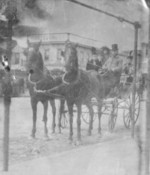 |
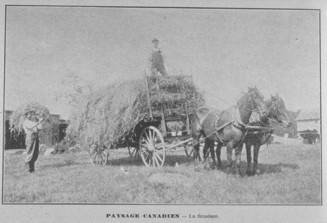 |
 |
The closing of the old books and adoption of the new also marks the transition of the Canadian Horse away from the horse that Dr. Couture described as “remarquable par son allure, du devant et du derriere" (remarkable for their action, in front and behind). This was the fast trotter and saddle-type horse so frequently exported. From then on, Canadian Horses would be bred to become a heavier, and more practical, working agricultural horse, typified by the progeny of Albert de Cap Rouge.
|
Albert was celebrated as a three year old for outweighing his sire and his dam, and for being able to produce progeny of increased weight and size. While he provided uniformity in type, his extensive use as a sire changed the direction and perception of the breed forever.
Albert is well-known to all Canadian Horse owners. However, there is likely no more important stallion in the history of the Canadian breed whose memory has been lost to us than Brillant, #23 in the old books, and #935 in the new.
Brillant was a handsome, 15 hand black stallion foaled in 1890, the property of Louis Messier, Varennes, QC. The Messier family was well-known in horse-breeding circles of the times, competing and placing highly with their stock in local and provincial exhibitions. Brillant was sold as an eight year old to Eusebe Boucher of St. Madeline, QC, and then was sold once again, at thirteen years of age to Hubert Chagnon, St. Norbert, Manitoba.
|
 |
|
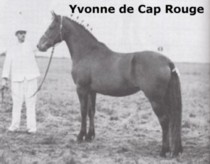 |
 |
If one was to look at the CLRC pedigree site, or in the early volumes of the new books, it would appear that Brillant was simply a “cheval de souche” who left only a few progeny whose lines died out, making him inconsequential to the Canadian breed. However, what the old books tell us is that Brillant had recorded pedigree information going back three generations, and that he himself sired 90 offspring registered in the old books. Several of his progeny, along with their descendants, were registered as anonymous "chevaux de souche" in the new books. Their bloodlines survive in our best horses today.
|
Several old and respected breeders, JB Remillard, Louis Vandal, Phileas Brodeur, and the Delands, took their mares regularly to Brillant’s court, and often inbred or line-bred his progeny. Brillant’s get were sold to the government, to agricultural societies, and to show barns in Montreal, Ontario and New York.
Almost every living Canadian Horse descends in some way from Brillant. Bourgeois #752/ #63, was a double grandson of Brillant (see pedigree below), and Brillant’s son, Beau-Choise, sired broodmare supreme - Poulette #750/ #240, dam of Florence #1574. Florence was the dam of both Yvonne de Cap Rouge ( by Tom) and Laurent de Cap Rouge ( by Albert).
|
 |
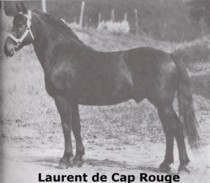 |
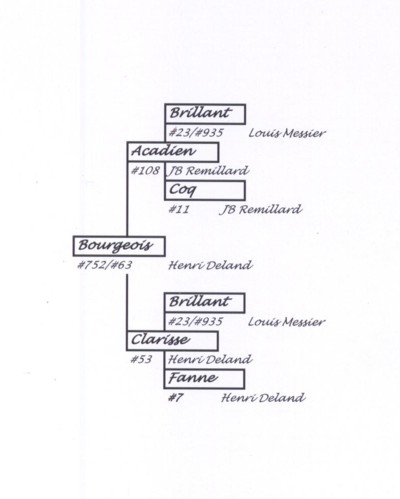 |
 |
|
|
" Ben," Brillant's sire, was recorded, and may have been one of the top trotting horses in the area of Montreal in the 1870s. However, as it was often the custom in those times to name a stallion after a possibly unrelated famous horse, verifying Brillant's ancestry is still a work in progress.
Brillant himself, trotted the mile in 2:20. In 1896, Brillant won the large 4 and over stallion class and champion stallion at the prestigious provincial Exhibition in St. Jean.
Even on his own, Brillant deserves to be once again recognized as an historic and influential founding sire of the Canadian breed.
|
 |
|
|
|